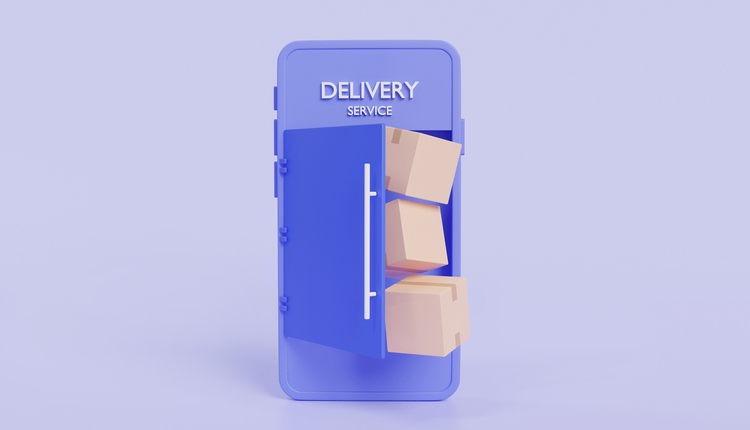Keeping the medical equipment supply chain as stable as possible is essential for health care facilities to operate smoothly. When the people working in those organizations don’t have the supplies they need at the right times, workflows slow and patient risks escalate. Fortunately, the strategic use of technology helps affected parties overcome obstacles and increase resilience.
Explore Point-of-Use Automation Products
Providers often have heavy workloads filled with lots of multitasking. Understandably, the need to document how and when they use specific medical equipment or other supplies correctly can slow them down. However, accurate details are essential. They confirm when people must remove reusable products for disinfection and sterilization, or show which single-use items are most in-demand at specific locations.
Also, proper documentation shows hospital administrators which equipment gets used most often. That information justifies when to purchase replacement equipment to prevent unplanned downtime.
However, the more steps providers must go through to log supplies used, the more their productivity could decrease and the less time they have for patient care. That’s why some medical facilities install point-of-use products that automate the documentation process. For example, a radio frequency identification scanner in an operating room allows a provider to take a few seconds to register the item in the system as used rather than available.
Once a person scans an item just before use, that event gets logged on a patient’s record and within broader inventory records. Other staff members then get updated details of stock levels or the locations of different pieces of equipment. This approach also eliminates manual recordkeeping, greatly reducing errors.
Getting feedback from those who handle supplies most often is an excellent starting point. What daily challenges do they encounter and how do they feel about using technology to overcome them? Many people initially resist changes but become more open to them after realizing that what’s different will positively affect their jobs and productivity.
Consider When and How to Deploy the Internet of Things
The Internet of Things (IoT) is a game-changer for many organizations aiming to address supply chain issues. Smart sensors can tell people the precise locations of supplies, eliminating any uncertainties about the availability of those items.
Researchers from the University of Cambridge also determined the IoT supports the usage and management of non-critical hospital equipment by providing reasonably priced solutions. Rolling out a facility-wide IoT plan might initially seem like an expensive prospect. However, people should consider all expenses misplaced or stolen equipment could cause. Those could include:
● Fees associated with emergency equipment rentals.
● Extra costs to have new supplies sent with rush shipping.
● Expenses linked to rescheduled procedures due to supply shortages.
● Patient-related ramifications due to unavailable medical equipment.
One common strategy is to use the IoT to track specific pieces of equipment before potentially scaling a project. That was the approach taken by defibrillator rental company Citycare. Representatives installed a solution that gave automatic daily operational statuses of each machine. The IoT product has a 10-year battery life, making it ideal for long-term use.
The relevant parties get immediate feedback if the connected system identifies issues with individual defibrillators. Moreover, Citycare employees replace the equipment within 24 hours. Since this business manages thousands of defibrillators, those prompt alerts help workers stay on top of problems. It’s then much more likely those life-saving devices will work when people need them.
Another thing to iron out when using the IoT with the medical equipment supply chain is which metrics the smart sensors will track. Is it enough for a manager to know if a device is in use or available? Do they also need to know which employee is using it and when that period began? When equipment requires specific training to operate properly, verifying who uses them and when is vital for overall safety.
Use Data Analytics Tools to Determine the Primary Causes of Problems
What makes a medical equipment supply chain stronger against possible shocks? Researchers from Deloitte sought to find out by interviewing executives overseeing the health care supplies in their respective facilities.
A common theme identified during those discussions was the need to uncover the root causes of the challenges faced. Failing to take that step often means pursued solutions don’t bring the expected positive results because the underlying difficulties persist. Deloitte’s researchers found many of the most resilient health care organizations took the time to get to the bottom of their supply chain issues.
For example, 64% cited labor troubles, while 58% did not have sufficient alternative supply chain sources. However, the top difficulty — cited by 67% of respondents — was poor data quality.
Data analysis tools are excellent for discovering trends and indicating which strategies should bring the most notable improvements. However, people should only utilize them when they’re fairly confident the information fed into them is accurate. Data quality problems can crop up in numerous ways. One of the most obvious is a system indicating the availability of a non-existent medical product.
However, people may misspell the names of specific medical supplies, making it difficult or impossible for others to search for them in massive databases. Multiple entries for single products also pose problems by artificially inflating numbers, even if that data doesn’t cause stockouts. Successfully using data analytics tools requires prioritizing the quality of the information before proceeding.
Understand How Use Varies Across Departments
After verifying data quality, managers can get reliable details about supply usage across departments. Many supplies get used across hospitals, which can initially make tracking more challenging. Butterfly needles are most commonly seen in 21 to 23-gauge varieties. However, people can buy them in 18 to 27-gauge options, with lower gauges representing larger bores.
Butterfly needles get used for everything from insulin injections to sexually transmitted disease tests. Thus, it’s too short-sighted for medical equipment supply chain professionals to focus only on one or a few departments. All-encompassing visibility across an organization supports accuracy.
People can also use data analysis tools to understand whether purchasing reusable supplies more often than single-use ones might be appropriate. A 2023 study showed that change could reduce many negative environmental impacts, except for water use.
However, reusable supplies could cause backlogs in the departments that clean these products between patients. Thus, it’s always wise to reflect on how specific changes could affect multiple parts of the medical equipment supply chain.
Act to Improve the Medical Equipment Supply Chain
Choosing technologies to tackle medical equipment availability issues is only part of the equation. It’s a great start, but the actionable tips and real-life case studies here will help you build a strategy most likely to give the desired short- and long-term results.
Emily Newton is the Editor-in-Chief of Revolutionized. She regularly covers trends in the industrial sector.













